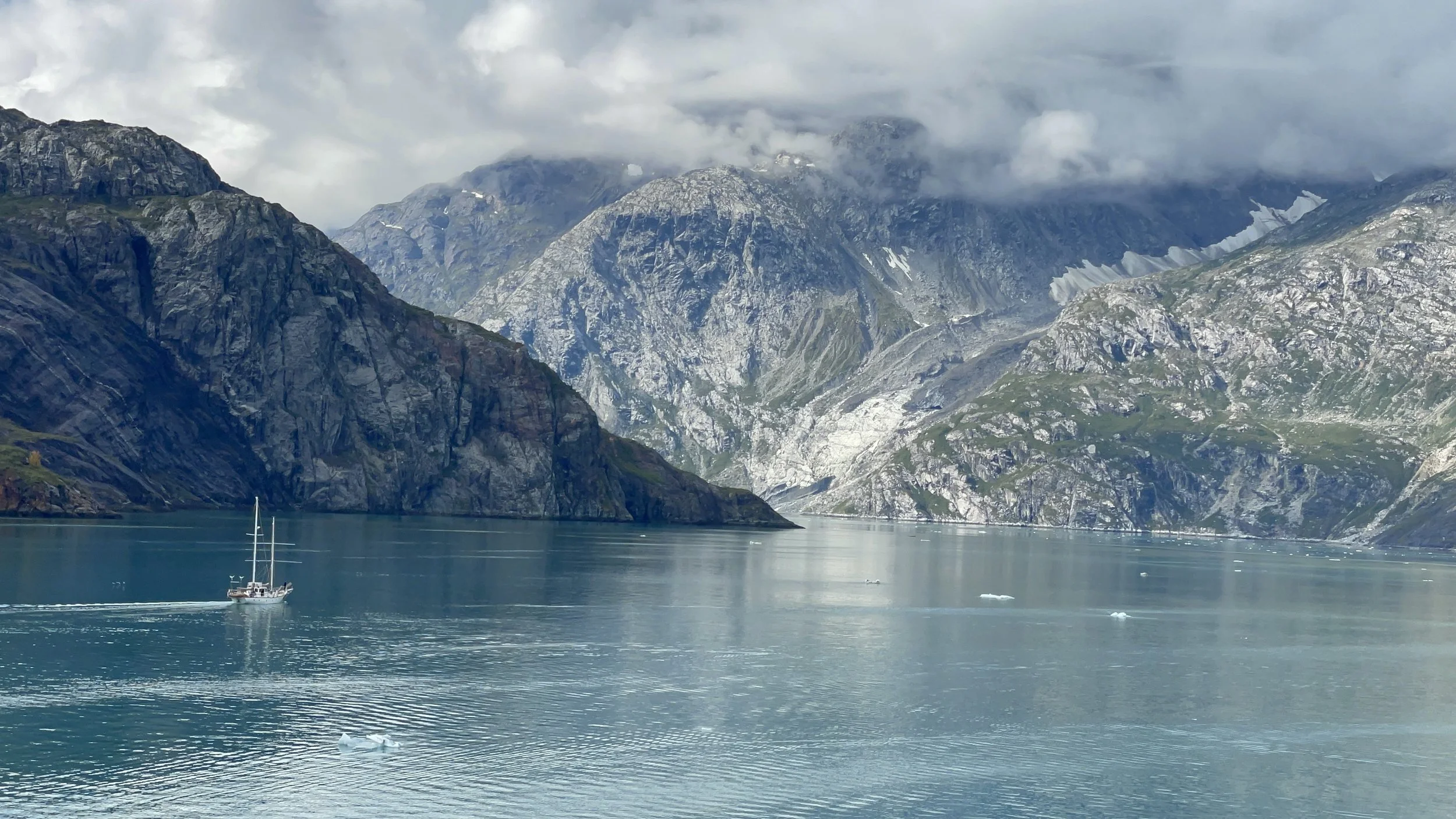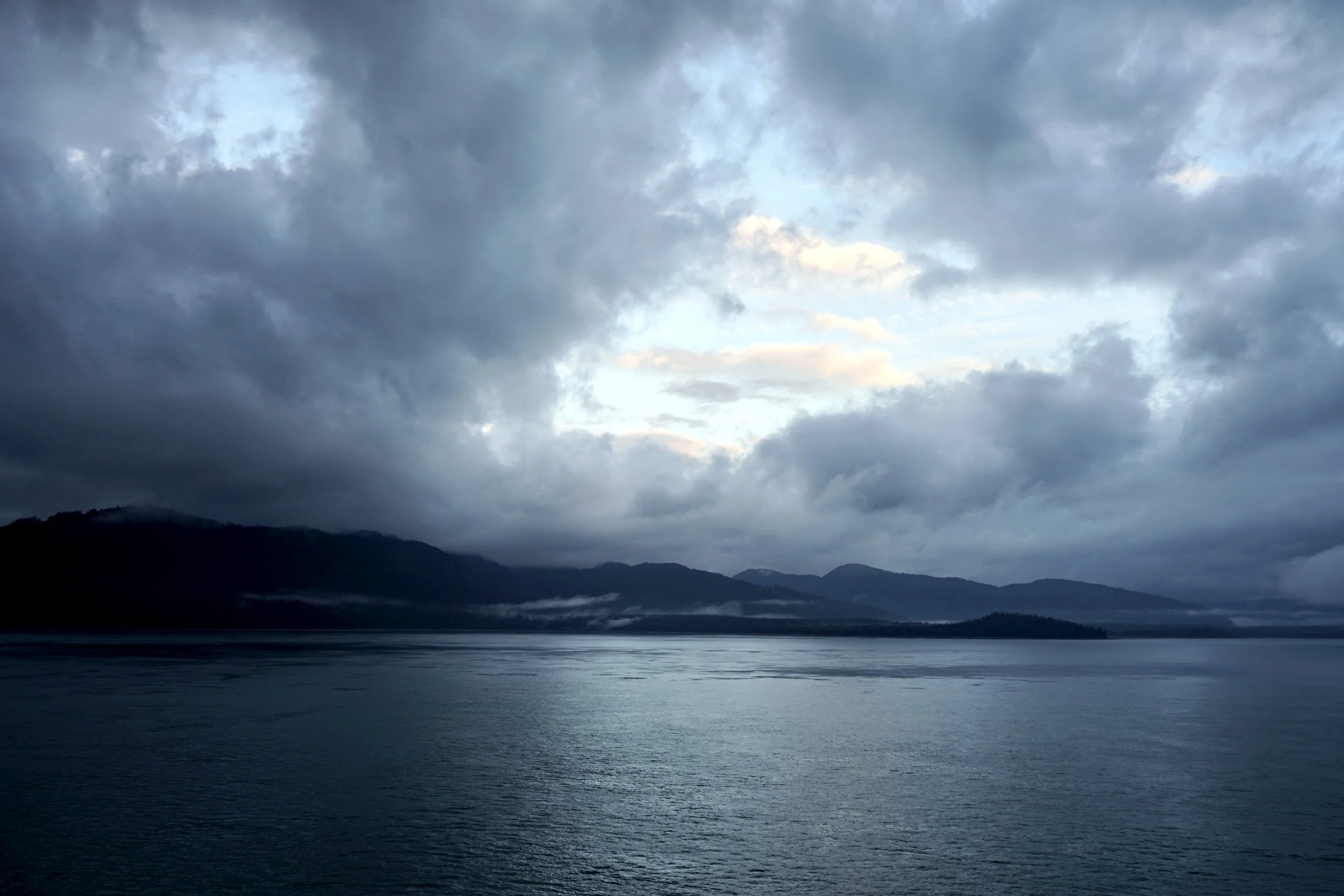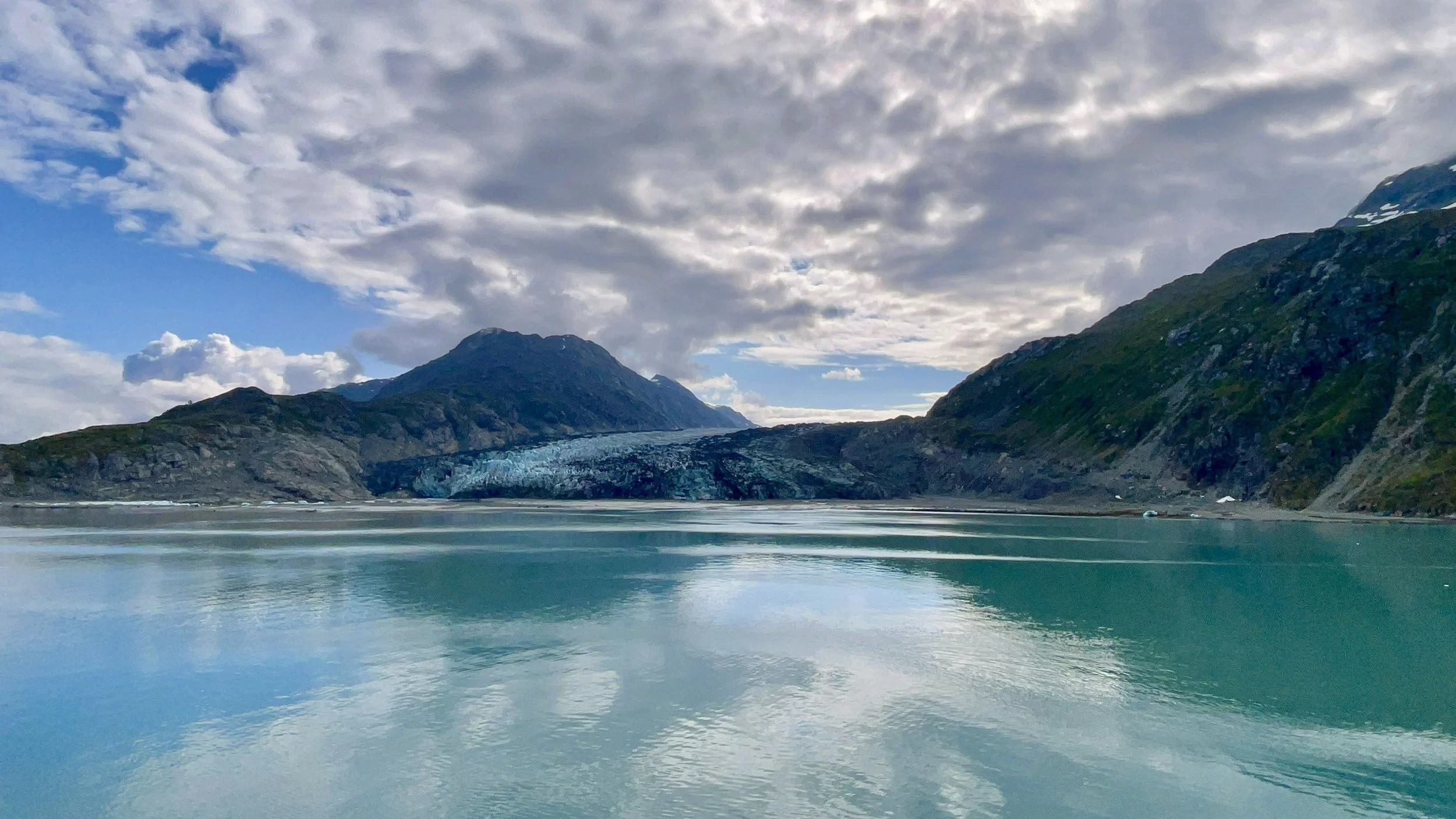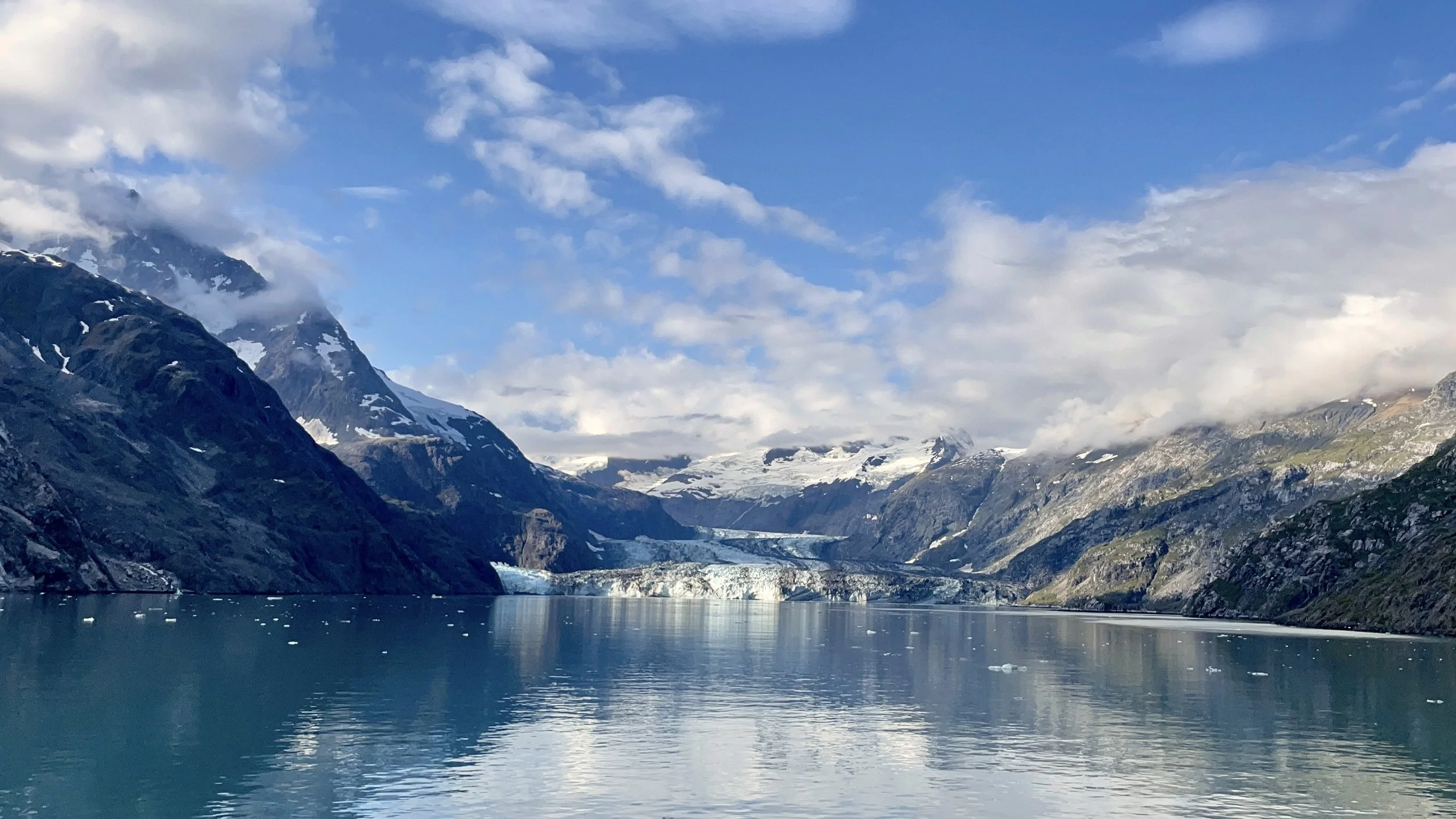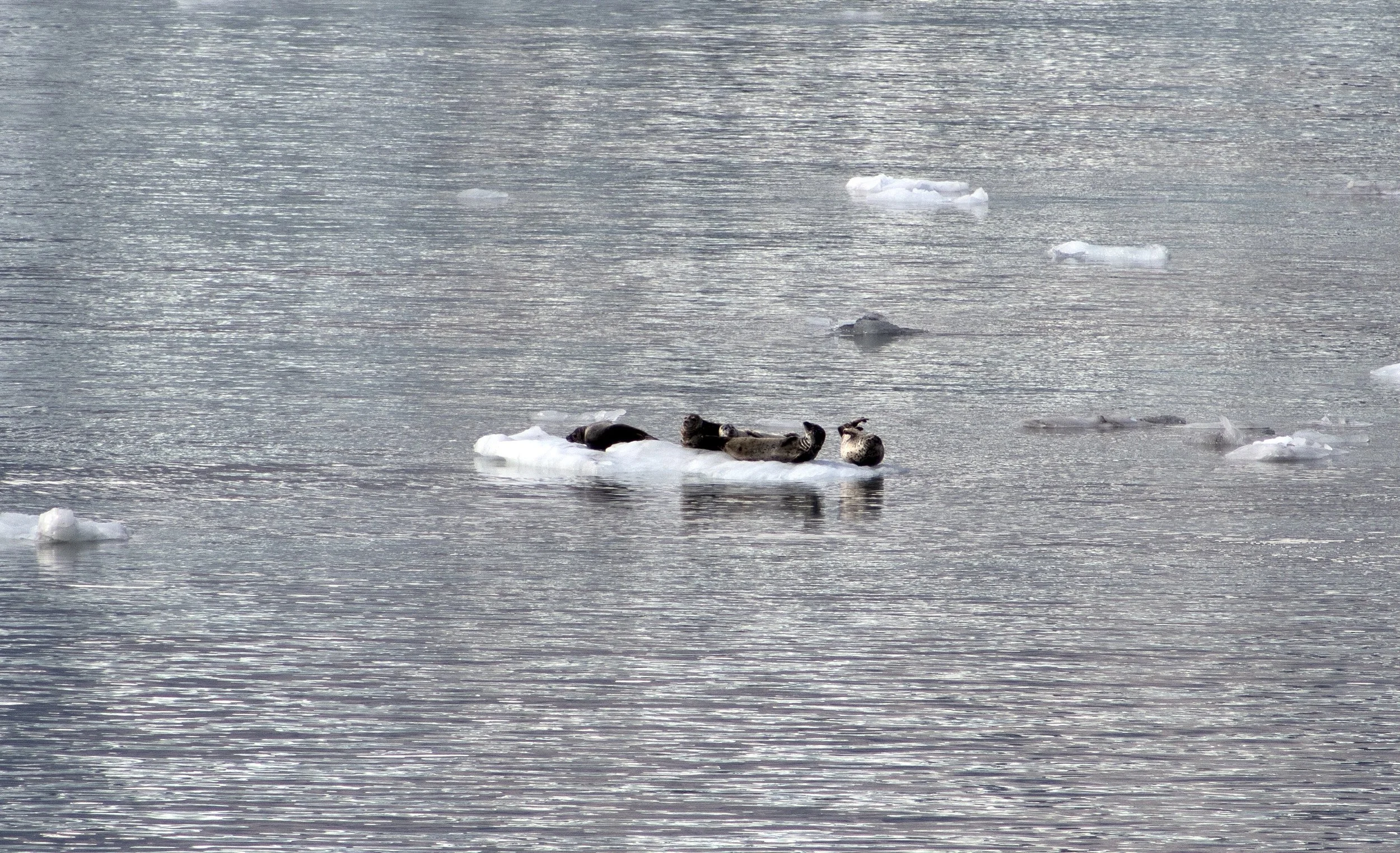#21 Glacier Bay National Park, Alaska
I had the chance to visit Glacier Bay National Park on a clear, crisp September morning during a 7-day Alaska cruise. Glacier Bay isn’t the kind of place you just stumble into. There are no roads, no scenic pull-offs, no traffic jams. You either arrive by water—or not at all. And honestly, that feels right for a place like this. Remote. Intact. Meant to be approached slowly.
We entered the bay at first light, as the sun pushed its way through a layer of low gray mist. The mountains in the distance stood still and massive, their ridgelines soft and smoky. It was quiet. Not empty, just… unhurried.
The air was biting. The kind of cold that doesn’t let you forget where you are. Eventually we slowed down to let a park ranger board the ship—part of the Glacier Bay experience for all cruise passengers. Once aboard, she set up a makeshift visitor center on one of the upper decks: folding table, brochures, a few laminated displays, and—of course—National Park Passport stamps. I made sure to get mine. You don’t come all this way and skip the stamp.
Throughout the morning, she gave short talks over the loudspeaker, answering questions and pointing out wildlife as we drifted past glacier after glacier. Sea otters floated on their backs, hands clasped together. A few harbor seals hauled themselves up onto the ice. Occasionally, we spotted a loan sea lion sunning itself on a floating piece of ice. When we reached Johns Hopkins Glacier, we paused. It was a wall of ancient ice—cracking, shifting, alive, and a bit dirty.
But here’s what most people don’t realize: Glacier Bay wasn’t always a bay. In 1794, when Captain George Vancouver sailed by, the entire area was locked in ice—one massive glacier. No open water, no wildlife, no ships passing through. By the time John Muir visited in 1879, the glacier had already retreated more than 40 miles. That’s an astonishing pace, and it hasn’t stopped.
The park was designated a national monument in 1925 and upgraded to national park status in 1980. It’s also a UNESCO World Heritage Site and a Biosphere Reserve, which are formal ways of saying: “Please don’t ruin this.”
Glacier Bay doesn’t shout. It doesn’t overwhelm with color or size. It hums with presence. It invites you to pay attention—to what’s there, what’s changing, and what’s quietly disappearing. It’s a place where things melt, shift, break, and continue anyway.
What to See and Do in Glacier Bay National Park
Glacier Bay is wilderness in the truest sense—no roads, no grand lodges, no reliable phone signal. And that’s kind of the point. Whether you pass through by cruise ship or come in closer via small boat, this is one of Alaska’s most striking places. Here’s how to make the most of it:
Johns Hopkins Glacier
Major Glaciers You May See
Johns Hopkins Glacier – A showstopper. One of the few advancing glaciers, surrounded by mountain peaks. Often a turnaround point for cruise ships.
Margerie Glacier – A classic tidewater glacier with frequent calving. Listen for the cracks—it’s louder than you’d expect.
Grand Pacific Glacier – Just beside Margerie. Covered in rocky debris and less flashy, but impressive in its own quiet, massive way.
Lamplugh Glacier – Brilliant blue ice and a more dramatic face. Often passed on smaller boat tours.
Reid Glacier – More gradual and accessible by kayak. A different, more grounded perspective.
Muir Glacier – Once the most visited in the park, now too far inland for most vessels. Still important—it’s where John Muir did much of his glacier research.
How to Visit Glacier Bay
By Cruise Ship: Most visitors see Glacier Bay this way. Ships spend most of a day cruising the bay, stopping near major glaciers while a park ranger narrates from onboard. You won’t go ashore, but you’ll see plenty.
By Day Boat Tour (from Gustavus): Fly or ferry into the town of Gustavus and take a smaller boat tour operated by Glacier Bay Lodge. These are more personal, closer to the shoreline, and get you deeper into less-traveled parts of the bay.
Kayaking or Backcountry Camping: For the experienced (and fully self-sufficient). Permits required. You’ll need gear, maps, and a good handle on unpredictable Alaskan weather—but the solitude is unmatched.
How to Visit the Glacier Bay Visitor Center
On a Cruise Ship: The rangers come to you. They set up an information table right on the ship, hand out maps and park stamps, and give talks throughout the day. It’s a portable visitor center, and surprisingly effective.
If You’re Staying in Bartlett Cove: The Glacier Bay Visitor Center is upstairs in Glacier Bay Lodge. It’s open seasonally and includes exhibits, ranger programs, and trail access. You can walk forested paths, sit along the shoreline, or take in the stillness from the deck.
Wildlife You Might Spot
Sea otters (playful and everywhere)
Harbor seals
Steller sea lions
Humpback whales (especially at the mouth of the bay)
Bald eagles
Mountain goats and black bears (check the shoreline with binoculars)

